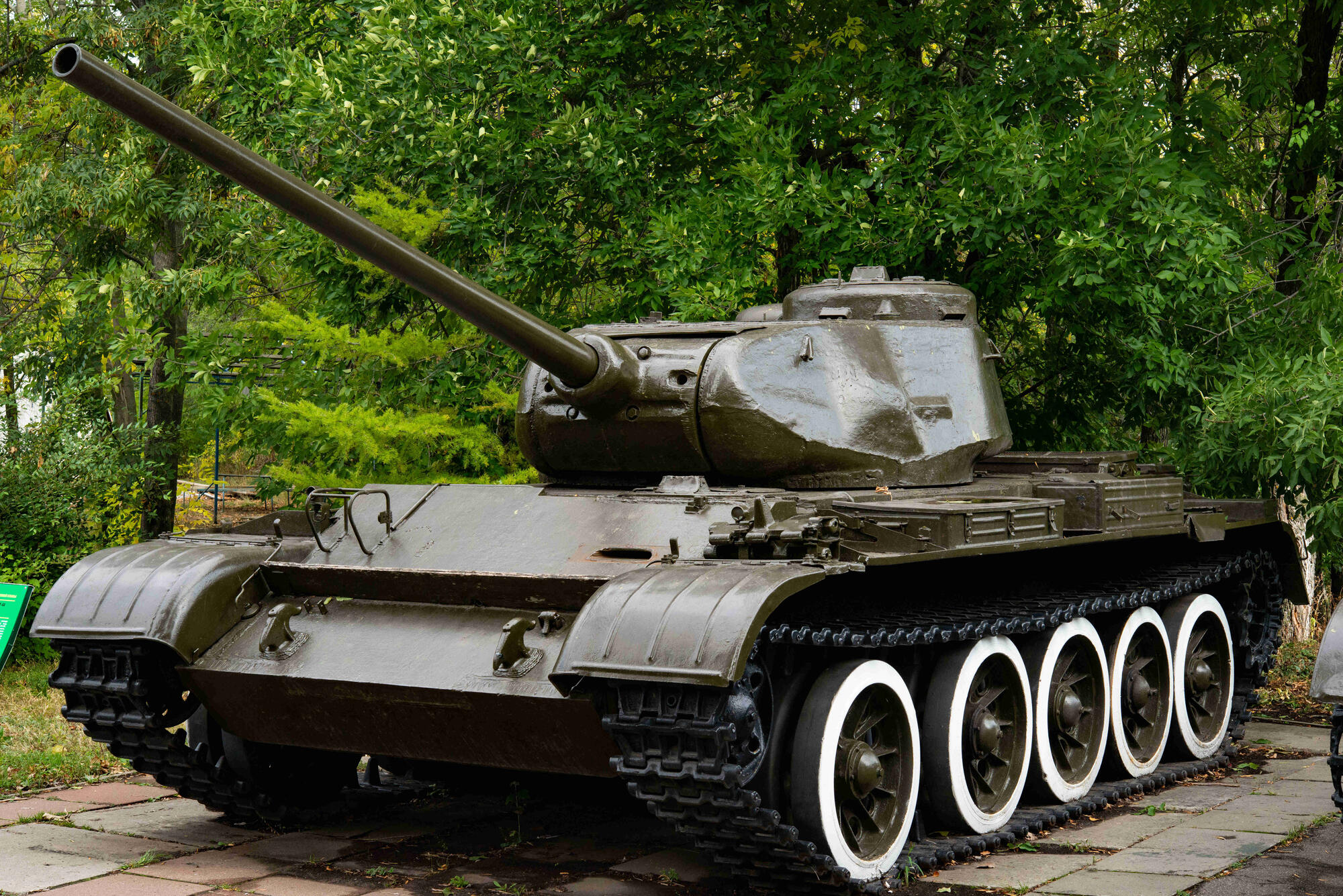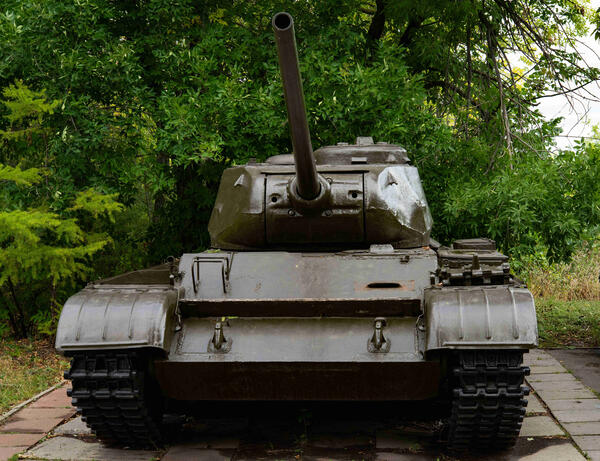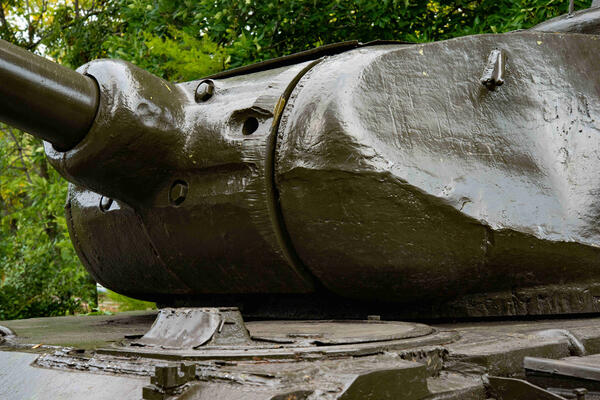The T-44 medium tank was developed in the design bureau of the State Tank Factory No. 183. The project was located in Nizhny Tagil and was led by Alexander Alexandrovich Morozov. The T-34-85 tank was the prototype for the T-44.
The design of the T-44 tank was revolutionary in the Soviet tank building. While preserving the classic layout, the designers managed to place the diesel engine perpendicular to the axis of the tank. In combination with a reduced size of the power transmission units, this made it possible to decrease the height of the hull by 300 mm compared to the T-34 tank and to shift the turret with an 85mm cannon to the center of the hull.
Even with such changes, the alignment of the combat vehicle was not violated, its weight did not change much compared to the T-34: the T-44 weighed almost the same — 31.8 tons, while the T-34-85 weighed 32 tons. The designers also managed to increase the thickness of the front armor of the hull to 90 mm without overburdening the front rollers.
This decision predetermined the layout of Soviet tanks of subsequent modifications for many decades to come. The strength of the front armor of the hull was increased by moving the driver’s hatch to the roof of the hull and dropping the ball mount of the bow machine gun. In addition, the control of the vehicle in the stowed position was dramatically improved, since the transfer of the driver’s hatch ensured better visibility.
The reliability of the chassis was enhanced thanks to the use of torsion suspension for the return rollers. The design of the turret, which was originally intended for the installation of an 85mm gun, allowed the possibility of mounting a larger caliber gun in the future. The tank hull was welded of rolled high-hardness armor plates.
The front part of the hull featured two armor plates 90 mm thick, with the upper plate mounted at an angle of 60°. The armament of the T-44 included an 85mm ZIS-S-53 cannon and two 7.62mm DTM machine guns.
The tank entered service in 1944, but was not used during the combat operation of the Great Patriotic War. It was mass-produced at plant No. 75 in Kharkiv until 1946. About 1 thousand units were manufactured. The T-44 medium tanks remained in service with the Soviet Army until the 1970s.
The design of the T-44 tank was revolutionary in the Soviet tank building. While preserving the classic layout, the designers managed to place the diesel engine perpendicular to the axis of the tank. In combination with a reduced size of the power transmission units, this made it possible to decrease the height of the hull by 300 mm compared to the T-34 tank and to shift the turret with an 85mm cannon to the center of the hull.
Even with such changes, the alignment of the combat vehicle was not violated, its weight did not change much compared to the T-34: the T-44 weighed almost the same — 31.8 tons, while the T-34-85 weighed 32 tons. The designers also managed to increase the thickness of the front armor of the hull to 90 mm without overburdening the front rollers.
This decision predetermined the layout of Soviet tanks of subsequent modifications for many decades to come. The strength of the front armor of the hull was increased by moving the driver’s hatch to the roof of the hull and dropping the ball mount of the bow machine gun. In addition, the control of the vehicle in the stowed position was dramatically improved, since the transfer of the driver’s hatch ensured better visibility.
The reliability of the chassis was enhanced thanks to the use of torsion suspension for the return rollers. The design of the turret, which was originally intended for the installation of an 85mm gun, allowed the possibility of mounting a larger caliber gun in the future. The tank hull was welded of rolled high-hardness armor plates.
The front part of the hull featured two armor plates 90 mm thick, with the upper plate mounted at an angle of 60°. The armament of the T-44 included an 85mm ZIS-S-53 cannon and two 7.62mm DTM machine guns.
The tank entered service in 1944, but was not used during the combat operation of the Great Patriotic War. It was mass-produced at plant No. 75 in Kharkiv until 1946. About 1 thousand units were manufactured. The T-44 medium tanks remained in service with the Soviet Army until the 1970s.





